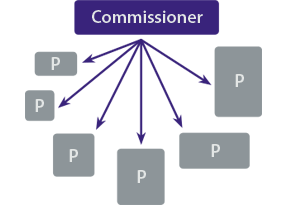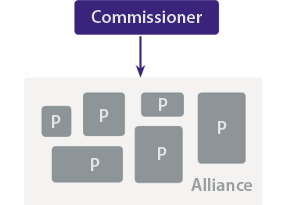
An alliance is, in effect, a virtual organisation. The members of an alliance drive a synergy where the benefits are greater than those obtained by acting individually.
Collective ownership of opportunities and responsibilities together with shared decision making create a collaborative environment without the need for new organisational forms.
An alliance is “an agreement between two or more individuals or entities stating that the involved parties will act in a certain way in order to achieve a common goal.”
Alliances can take many forms and they all have the above definition in common. Alliancing can be applied to delivery of services, co-design, research and development, innovation and change programmes. See here for examples of why alliancing will add value in various situations.
An alliance is typically set up for a specific purpose and is disbanded when that purpose has been achieved.
Alliance contracting is the term usually applied to project or service delivery where there is one contract between the owner/financier/commissioner and an alliance of parties who deliver the project or service.
An alliance contract creates a collaborative environment without the need for new organisational forms. By having one alliance contract, all parties are working to the same outcomes and are signed up to the same success measures. There is a strong sense of your problem is my problem, your success is my success.
Typically there is a risk share across all parties and any ‘gain’ or ‘pain’ is linked with good or poor performance overall and not to the performance of individual parties.
The distinctions between alliance contracts and traditional service contracts are broken down in the diagram below.


All content © LH Alliances Ltd 2024. All rights reserved |